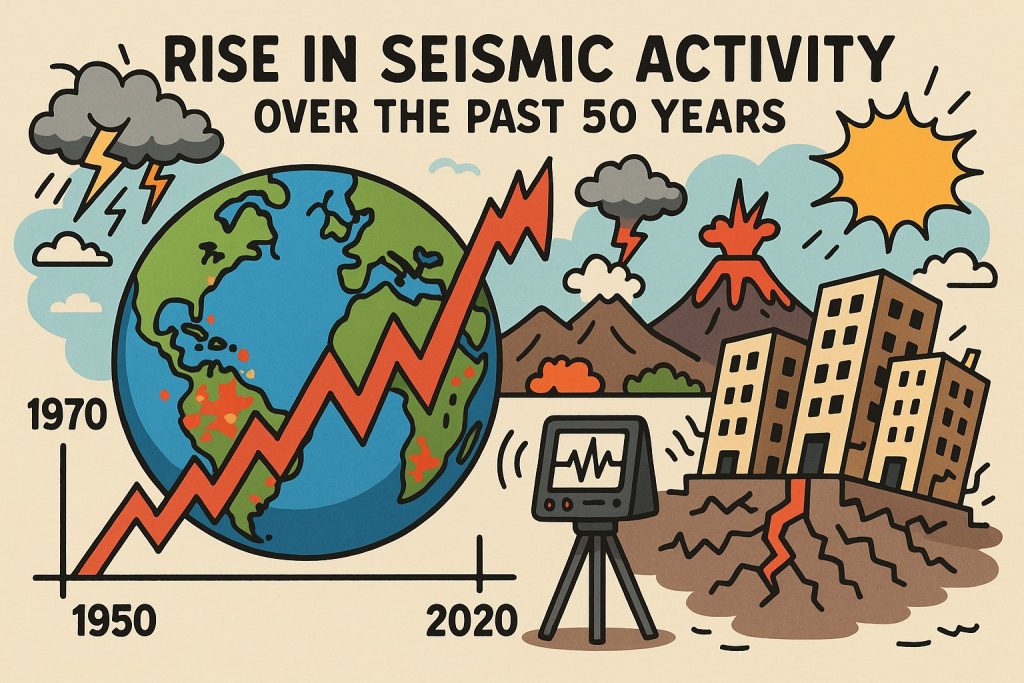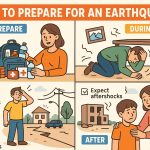Over the past five decades, scientists have observed a noticeable rise in seismic activity worldwide. Earthquakes, both large and small, appear to be occurring with greater frequency and intensity in various regions. While not all experts agree on the interpretation of this trend, it has sparked considerable research into the underlying causes and implications for global safety and preparedness.
Global Earthquake Trends Since the 1970s
Since the 1970s, global earthquake databases have recorded a steady increase in the number of magnitude 5+ earthquakes. Although part of this rise is due to better detection technologies, researchers have identified true increases in earthquake clusters, especially in seismically active zones like the Pacific Ring of Fire, the Himalayas, and the Middle East.
In particular, megathrust earthquakes—those over magnitude 8—have become more frequent since the 2000s. Events like the 2004 Indian Ocean tsunami (magnitude 9.1) and the 2011 Tōhoku earthquake in Japan (magnitude 9.0) have brought renewed attention to seismic risk management.
Possible Causes Behind the Increase
Multiple factors may contribute to this observed trend:
- Tectonic stress accumulation: Over time, stress builds up along fault lines, leading to more frequent ruptures.
- Climate-related influences: Melting glaciers and rising sea levels may alter pressure on the Earth’s crust in coastal regions, potentially triggering earthquakes.
- Human activities: Activities like fracking, deep drilling, and reservoir construction have been associated with induced seismicity, especially in the U.S., China, and Central Asia.
Improved global seismographic coverage also plays a role—earthquakes that went undetected decades ago are now recorded and analyzed with precision.
Risks to Populated Areas
As urbanization increases near fault lines, more people are at risk than ever before. Cities such as Istanbul, Jakarta, Los Angeles, and Mexico City are all vulnerable to devastating earthquakes. The growing frequency of moderate tremors raises concerns about cumulative damage to infrastructure and preparedness for larger future quakes.
Furthermore, developing countries often lack early warning systems or earthquake-resistant construction standards, making them more vulnerable to both immediate destruction and long-term humanitarian crises.
Preparing for a Seismic Future
Monitoring agencies like the United States Geological Survey (USGS) and Japan Meteorological Agency (JMA) continue to improve earthquake forecasting models, although precise predictions remain elusive. Investments in early-warning systems, retrofitting older buildings, and educating the public on emergency protocols are vital in minimizing harm.
While the Earth’s tectonic processes cannot be stopped, societies can reduce risks through data-driven urban planning and disaster readiness. Recognizing the increase in seismic activity helps communities prioritize resilience and sustainability.
Glossary
- Seismic activity — The frequency and strength of earthquakes in a specific region or period.
- Megathrust earthquake — A powerful type of earthquake occurring at subduction zones between tectonic plates.
- Induced seismicity — Earthquakes triggered by human activities such as mining or drilling.
- Fault line — A fracture in the Earth’s crust where two tectonic plates meet.
- Seismograph — An instrument that detects and records the vibrations caused by seismic waves.


